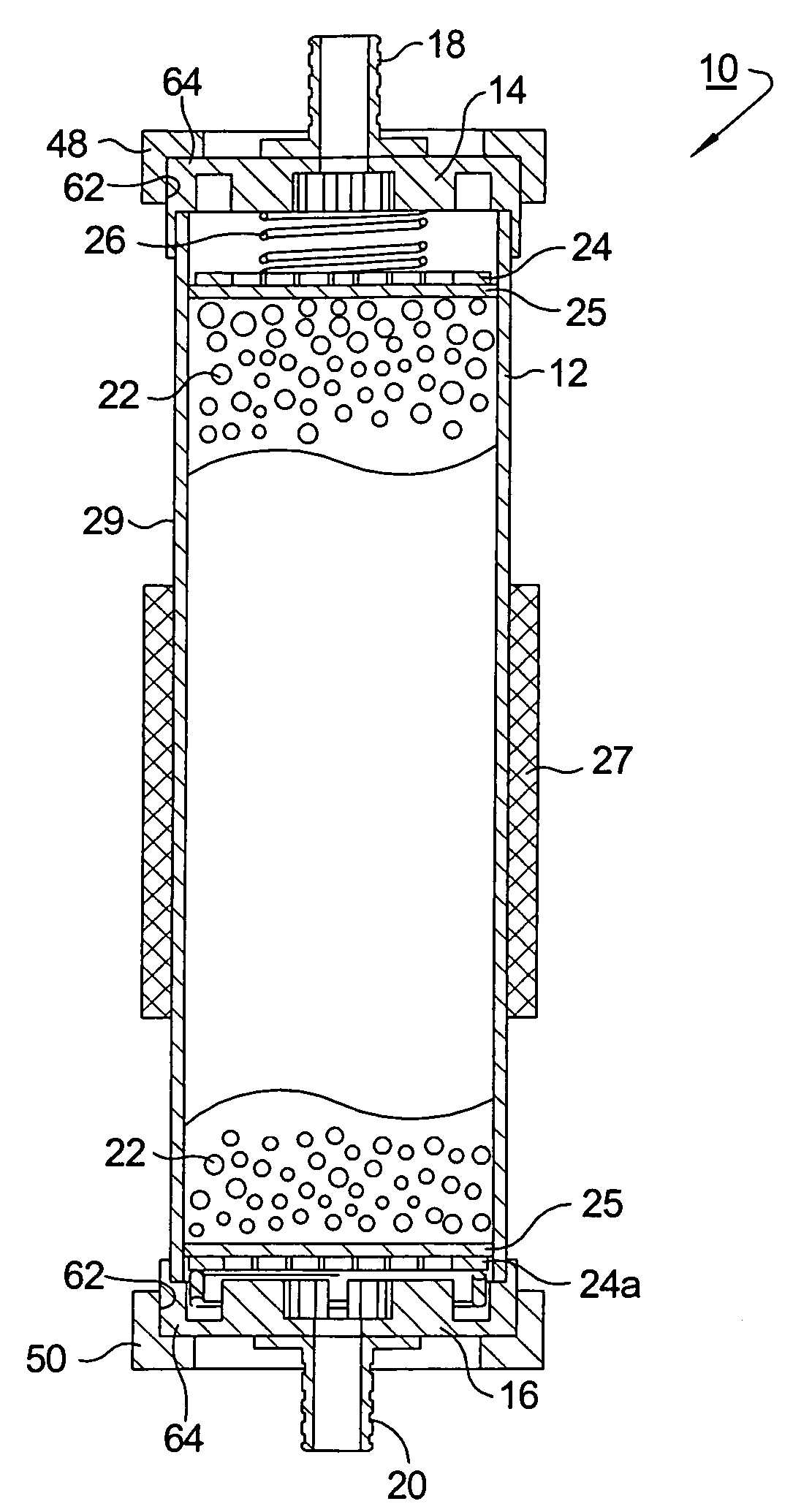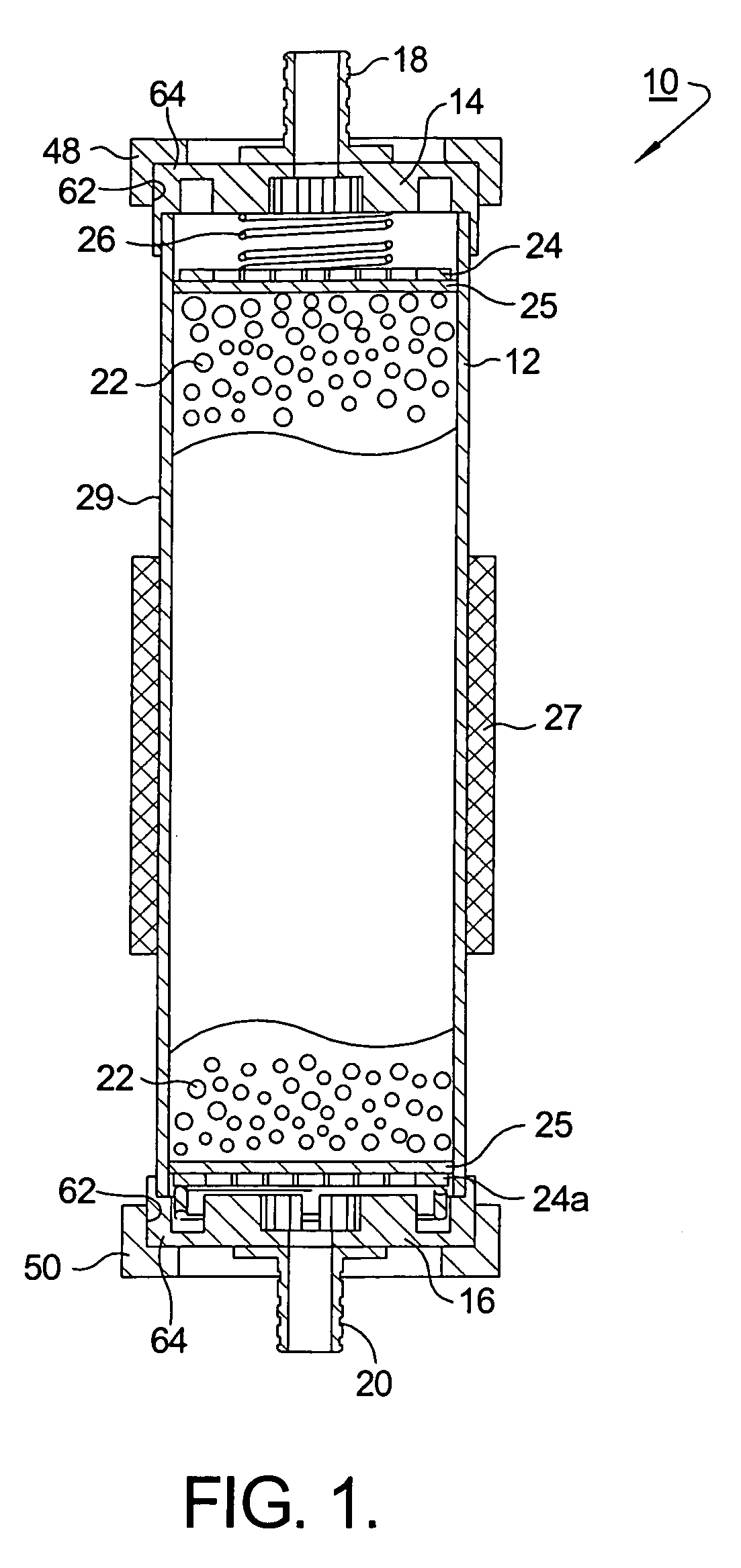Evaporative emissions canister suitable for marine use
a technology of evaporative emissions and canisters, which is applied in the direction of special-purpose vessels, separation processes, vessel construction, etc., can solve the problems of inability to adapt prior art automotive-type canisters to use in boats, displacement of vapors undetectedly in the atmosphere, and bulky canisters. achieve the effect of relieving stress
- Summary
- Abstract
- Description
- Claims
- Application Information
AI Technical Summary
Benefits of technology
Problems solved by technology
Method used
Image
Examples
Embodiment Construction
[0018]Referring to FIG. 1, an improved canister assembly 10 for adsorption of fuel vapors in accordance with the invention comprises an elongate housing 12 having first and second end caps 14,16, each end cap including a tubular connector 18,20 for connection of assembly 10 to hose or pipe as described below. Preferably, housing 12 is formed by linear extrusion in known fashion of a thermoplastic polymer, for example, a polyolefin such as polypropylene, or a polyamide such as nylon. Preferably, end caps 14,16 are formed by injection molding of similar polymeric materials such that the end caps may be sealingly joined to the housing in known fashion as by adhesives, laser welding, spin welding, or the like. Alternatively, housing 12 and / or end caps 14,16 may be formed of a corrosion-resistant metal such as a stainless steel and may be welded together in known fashion to form assembly 10.
[0019]An amount of a vapor-adsorbent material 22 is disposed within housing 12 such that vapors en...
PUM
 Login to View More
Login to View More Abstract
Description
Claims
Application Information
 Login to View More
Login to View More - R&D
- Intellectual Property
- Life Sciences
- Materials
- Tech Scout
- Unparalleled Data Quality
- Higher Quality Content
- 60% Fewer Hallucinations
Browse by: Latest US Patents, China's latest patents, Technical Efficacy Thesaurus, Application Domain, Technology Topic, Popular Technical Reports.
© 2025 PatSnap. All rights reserved.Legal|Privacy policy|Modern Slavery Act Transparency Statement|Sitemap|About US| Contact US: help@patsnap.com



